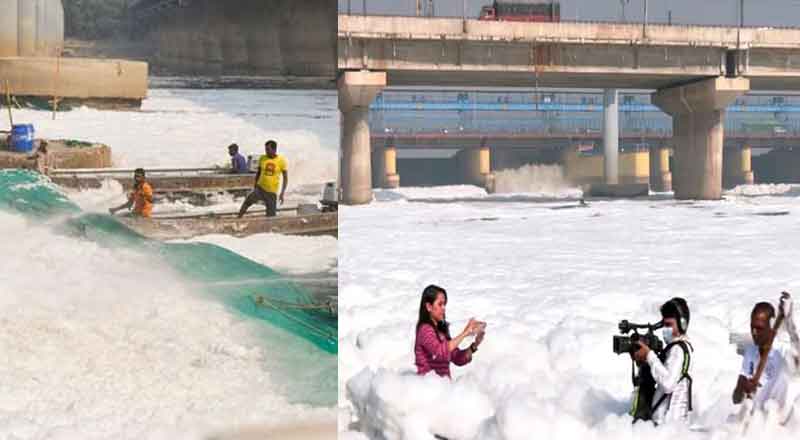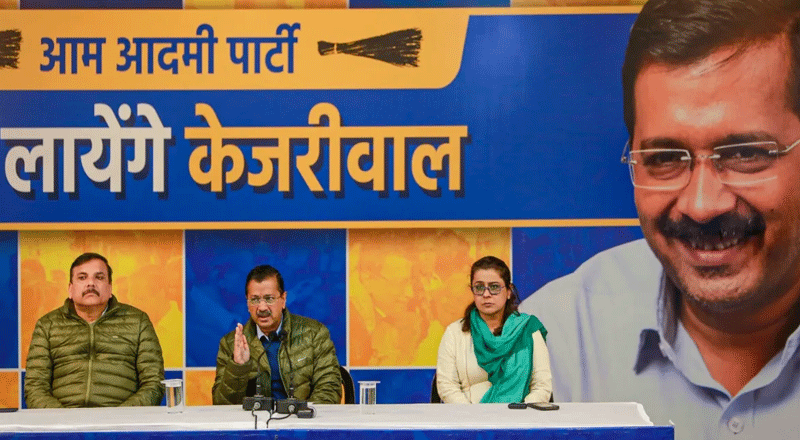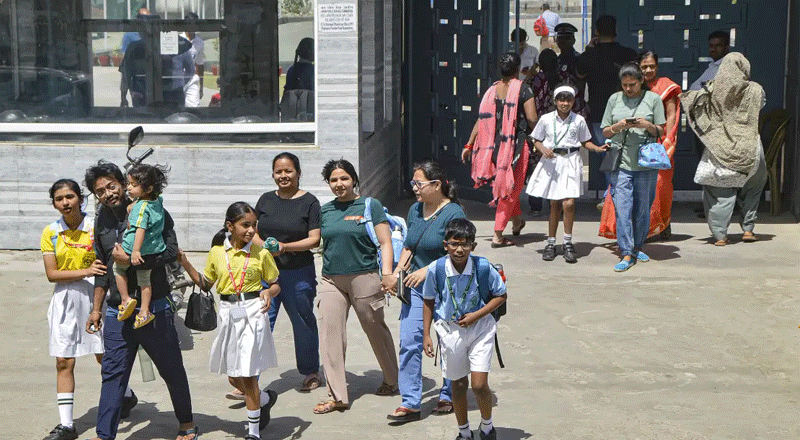Delhi-NCR continues to reel under severe air pollution, with the air quality locked in the “Very Poor” category, casting a heavy blanket of smog over the region. On Tuesday, the familiar morning haze engulfed Delhi, joined by a new sign of environmental distress: toxic foam floating on the surface of the Yamuna River in the Kalindi Kunj area. Despite efforts to tackle pollution, complaints flood in, and authorities struggle to address the worsening situation. This environmental and public health crisis has raised concerns about accountability and the effectiveness of air quality management in the national capital region.
Persistent Air Quality Issues: Smog and Pollution Complaints
Delhi’s air quality, rated as “very poor” with an AQI (Air Quality Index) of 349 on Monday and rising to an average of 355 on Tuesday, reflects the depth of the pollution problem. Visibility is drastically reduced by smog and fog, which remain persistent through morning and evening hours. Factors contributing to this hazardous air include stubble burning in neighboring states, post-Diwali fireworks, and stagnant air due to low wind speeds. With humidity levels reaching 96% on Tuesday, the thick pollution lingers, worsening the already dire situation.
The Central Pollution Control Board (CPCB) has received over 800 pollution-related complaints in the past ten months, according to an RTI filed by environmentalist Amit Gupta. However, no records indicate actions taken against local officers as per a Supreme Court mandate from 2018, which required authorities to hold officials accountable for failing to resolve pollution complaints. This lack of accountability points to a critical gap in the enforcement of pollution control measures, as complaints filed through various platforms such as Twitter, the Sameer app, and email continue to pile up without clear resolution.
Slow Response from Authorities and Legal Notices to Local Bodies
In response to mounting complaints, the CPCB has issued legal notices to local agencies, including the North Delhi Municipal Corporation (North MCD), Delhi State Industrial and Infrastructure Development Corporation (DSIIDC), the Public Works Department (PWD), and the Delhi Development Authority (DDA). These agencies are key players in the fight against pollution in Delhi, yet the continued decline in air quality suggests that these measures have had limited impact. Recently, the Commission for Air Quality Management (CAQM) expressed concerns about the slow pace of addressing pollution-related complaints and the accumulation of unresolved cases, urging authorities to adopt a more proactive approach to pollution control.
Yamuna River and Toxic Foam: An Alarming Sight
As the air quality deteriorates, another environmental hazard has emerged: toxic foam on the Yamuna River’s surface, particularly visible in the Kalindi Kunj area. This foam is often a by-product of industrial waste and untreated sewage, adding yet another layer of pollution to the region. The sight of foam on the river is a stark reminder of the broader pollution crisis affecting Delhi-NCR’s air, water, and soil. It underscores the need for comprehensive measures not just for air quality, but for overall environmental health in the region.
A Call for Urgent, Accountable Action
Delhi-NCR’s escalating pollution crisis demands immediate action, accountability, and a comprehensive, coordinated approach from all stakeholders. The persistent smog, coupled with pollution in the Yamuna River, presents a dire environmental and public health issue. While legal notices to local bodies are a step forward, it is clear that enforcement and timely action must be prioritized. Effective management of Delhi’s pollution crisis requires holding responsible parties accountable and implementing long-term solutions. Without decisive action, the region risks deeper health and environmental consequences.
(With inputs from agencies)





